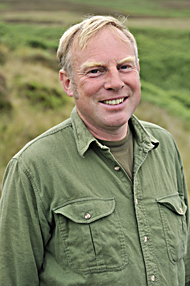
| HOME |
| PROJECT DETAILS |
| PROJECT ADMINSTRATION |
| JOINT RAPTOR STUDY |
| THE MOOR |
| THE GROUSE |
| THE RAPTORS |
| OTHER WILDLIFE |
| DIVERSIONARY FEEDING |
| GAMEKEEPING |
| WILDLIFE SURVEYS |
| NEWS |
| CONTACT |
| PHOTO GALLERY |
Previous Diaries
| Simon Lester's gamekeeping diary |
December 2010 NOVEMBER has gone from wet to white and snow now covers the moor. It's a worry because it will be a long winter for the grouse and they will be more exposed to predation in these harsh conditions.Mind you, the grouse we handled while fitting radio tags were in good condition, with low worm burdens. Tracking foxes and stoats in the snow is always an education. What is good is that there are less of them now than when it snowed not long after the keepering staff arrived in 2008. What has not changed, however, is these predators' agility and dexterity; I am constantly amazed by their ability to squeeze through the smallest of spaces and trot along the top of stonewalls without missing a beat. Checking fox earths is a slow job in this weather and being able to track animals depends on the quality of the snow when it falls. Telltale footprints are soon covered by fresh or drifting snow. We have had a run on foxes during the past couple of months. Many of them are this year's youngsters, but I did catch an old dog the other day that hardly had a tooth left in its head. I am sure that animals have an early warning system that lets them know when snow is on its way. One of our young, tagged hen harriers that had been happily hefted on the Lammermuirs moved off towards the coast just before the snow arrived. While out lamping for foxes at night, I can never resist looking for the animal that comes to the moor when most other creatures have left – the salmon, which arrives while making the last leg of its expedition to spawn. Using a powerful light, it is possible to spot them as they congregate in pools in the rivers that run over the moor. Also, when I sit out at night waiting for a fox, using my digital call to attract them to the area, I often hear splashes as the salmon force their way up the water on their final swim to the top of Tarras Water. I am pleased that work on the new fences has started, as it will enable us to move sheep off areas where we need to improve the heather. The whole operation has taken considerable effort from the Langholm farms, particularly the shepherds. Many obstacles have been overcome – such as where to overwinter sheep – along with all the extra work that comes when looking after livestock in these wintry conditions. The Project keepers all appreciate this effort from the farms and are relieved that some of the moor's most vulnerable patches of heather now stand a good chance of being rehabilitated and restored. And on that note of optimism, we look ahead to Christmas and the year ahead. The snow is deepening and there is a biting north wind, so who knows what lies ahead. A Good New Year to you all when it comes. |
